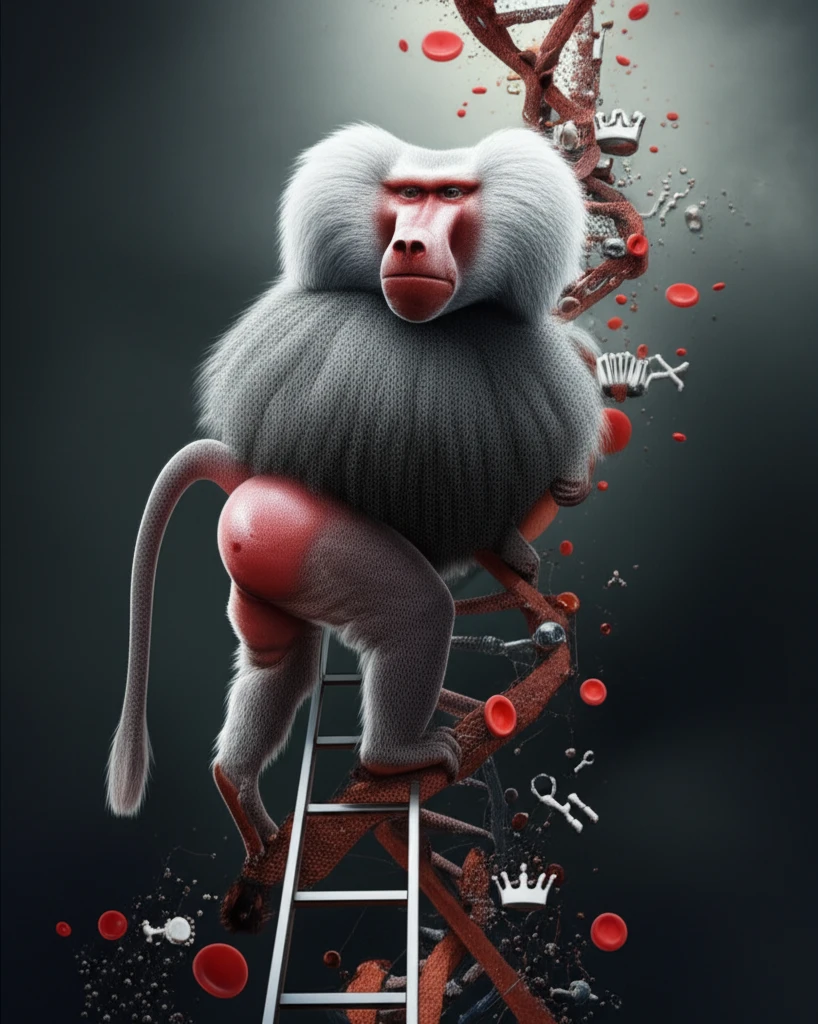
The Social Ladder's Secret: How Status Rewires Your Immunity
"New research in wild baboons reveals that social standing profoundly influences gene expression and immune function, with surprising differences between the sexes."
In societies structured by dominance hierarchies, social status exerts a powerful influence on health and well-being. From humans to baboons, an individual's position in the social pecking order is often linked to critical physiological outcomes, including hormone levels, immune function, and even longevity. Understanding how social hierarchies impact our biology is crucial, especially given the parallels between animal dominance ranks and socioeconomic status in human populations.
While it's clear that social status and health are intertwined, the molecular mechanisms driving this connection remain a puzzle. Studies have begun to unravel this mystery, exploring how social stress affects gene regulation, particularly within the immune system. By examining the molecular signatures of social status, researchers hope to shed light on how social gradients 'get under the skin' and influence our health.
Recent research on wild baboons is providing new insights into the complex relationship between social status, gene expression, and immune function. Unlike previous lab studies, this research explores these dynamics in a natural setting, revealing surprising sex-specific differences in how social hierarchies impact immunity. This research highlights that understanding the interplay between genes and social structures is critical for future health and wellness.
Baboon Society: A Tale of Two Hierarchies

Baboon society offers a fascinating case study because males and females establish dominance in distinct ways. Males form a competitive hierarchy based on fighting ability, with prime-age males in top physical condition typically holding the highest ranks. In contrast, female baboons inherit their social status through their mothers, creating a more stable, nepotistic hierarchy.
- Male Dominance: High social status in males was associated with increased expression of genes involved in innate immunity and inflammation. This suggests that high-ranking males exhibit a more proactive immune response.
- Female Ranks: In contrast, females showed a much weaker relationship between social status and gene expression. This may be due to the stabilizing effects of kinship and social support within female baboon society.
- Reversed Roles: The gene expression patterns observed in high-status male baboons were opposite to those seen in previous studies of low-status female macaques, highlighting the context-dependent nature of social status effects.
Why These Findings Matter to You
This baboon study offers important lessons for understanding how social environments influence health and well-being. By demonstrating that social status can profoundly impact gene expression and immune function, it provides a potential mechanism for how social inequality translates into health disparities.
The finding that social status effects differ between the sexes underscores the importance of considering social context when studying these relationships. Factors such as social support, kinship, and the nature of competition can all shape how social hierarchies impact our biology.
Ultimately, this research emphasizes that our social experiences can have a lasting impact on our health at the molecular level. By understanding these mechanisms, we can develop interventions to mitigate the negative effects of social inequality and promote health equity for all.
